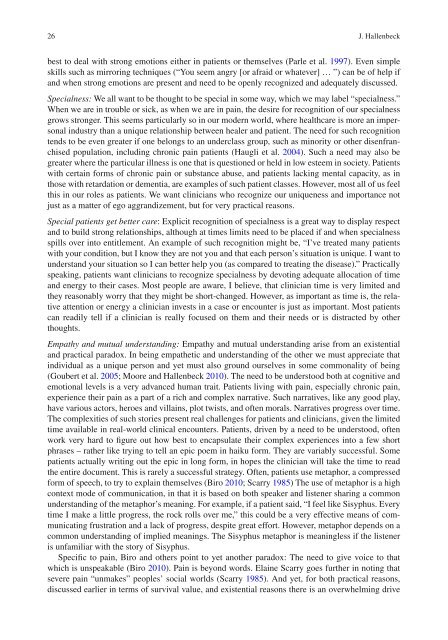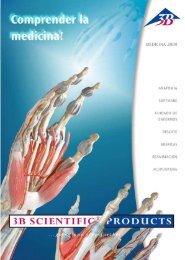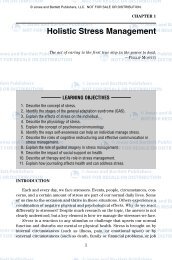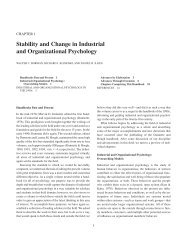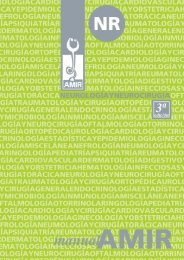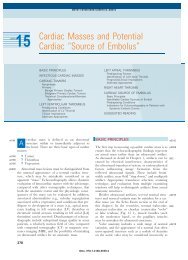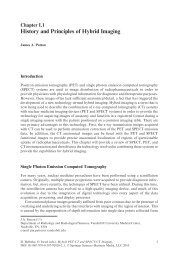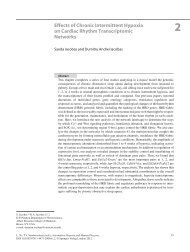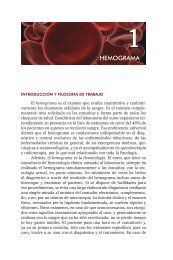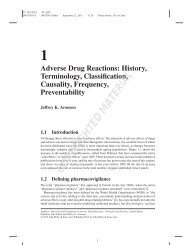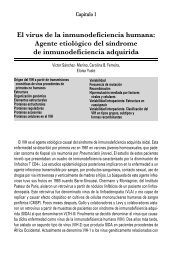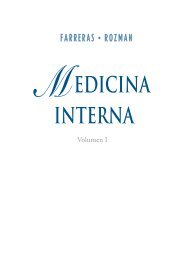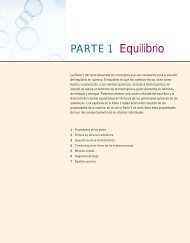Download Sample pages 1 (pdf, 195 kB) - Springer
Download Sample pages 1 (pdf, 195 kB) - Springer
Download Sample pages 1 (pdf, 195 kB) - Springer
Create successful ePaper yourself
Turn your PDF publications into a flip-book with our unique Google optimized e-Paper software.
26 J. Hallenbeck<br />
best to deal with strong emotions either in patients or themselves (Parle et al. 1997 ) . Even simple<br />
skills such as mirroring techniques (“You seem angry [or afraid or whatever] … ”) can be of help if<br />
and when strong emotions are present and need to be openly recognized and adequately discussed.<br />
Specialness: We all want to be thought to be special in some way, which we may label “specialness.”<br />
When we are in trouble or sick, as when we are in pain, the desire for recognition of our specialness<br />
grows stronger. This seems particularly so in our modern world, where healthcare is more an impersonal<br />
industry than a unique relationship between healer and patient. The need for such recognition<br />
tends to be even greater if one belongs to an underclass group, such as minority or other disenfranchised<br />
population, including chronic pain patients (Haugli et al. 2004 ) . Such a need may also be<br />
greater where the particular illness is one that is questioned or held in low esteem in society. Patients<br />
with certain forms of chronic pain or substance abuse, and patients lacking mental capacity, as in<br />
those with retardation or dementia, are examples of such patient classes. However, most all of us feel<br />
this in our roles as patients. We want clinicians who recognize our uniqueness and importance not<br />
just as a matter of ego aggrandizement, but for very practical reasons.<br />
Special patients get better care : Explicit recognition of specialness is a great way to display respect<br />
and to build strong relationships, although at times limits need to be placed if and when specialness<br />
spills over into entitlement. An example of such recognition might be, “I’ve treated many patients<br />
with your condition, but I know they are not you and that each person’s situation is unique. I want to<br />
understand your situation so I can better help you (as compared to treating the disease).” Practically<br />
speaking, patients want clinicians to recognize specialness by devoting adequate allocation of time<br />
and energy to their cases. Most people are aware, I believe, that clinician time is very limited and<br />
they reasonably worry that they might be short-changed. However, as important as time is, the relative<br />
attention or energy a clinician invests in a case or encounter is just as important. Most patients<br />
can readily tell if a clinician is really focused on them and their needs or is distracted by other<br />
thoughts.<br />
Empathy and mutual understanding: Empathy and mutual understanding arise from an existential<br />
and practical paradox. In being empathetic and understanding of the other we must appreciate that<br />
individual as a unique person and yet must also ground ourselves in some commonality of being<br />
(Goubert et al. 2005 ; Moore and Hallenbeck 2010 ) . The need to be understood both at cognitive and<br />
emotional levels is a very advanced human trait. Patients living with pain, especially chronic pain,<br />
experience their pain as a part of a rich and complex narrative. Such narratives, like any good play,<br />
have various actors, heroes and villains, plot twists, and often morals. Narratives progress over time.<br />
The complexities of such stories present real challenges for patients and clinicians, given the limited<br />
time available in real-world clinical encounters. Patients, driven by a need to be understood, often<br />
work very hard to fi gure out how best to encapsulate their complex experiences into a few short<br />
phrases – rather like trying to tell an epic poem in haiku form. They are variably successful. Some<br />
patients actually writing out the epic in long form, in hopes the clinician will take the time to read<br />
the entire document. This is rarely a successful strategy. Often, patients use metaphor, a compressed<br />
form of speech, to try to explain themselves (Biro 2010 ; Scarry 1985 ) The use of metaphor is a high<br />
context mode of communication, in that it is based on both speaker and listener sharing a common<br />
understanding of the metaphor’s meaning. For example, if a patient said, “I feel like Sisyphus. Every<br />
time I make a little progress, the rock rolls over me,” this could be a very effective means of communicating<br />
frustration and a lack of progress, despite great effort. However, metaphor depends on a<br />
common understanding of implied meanings. The Sisyphus metaphor is meaningless if the listener<br />
is unfamiliar with the story of Sisyphus.<br />
Specifi c to pain, Biro and others point to yet another paradox: The need to give voice to that<br />
which is unspeakable (Biro 2010 ) . Pain is beyond words. Elaine Scarry goes further in noting that<br />
severe pain “unmakes” peoples’ social worlds (Scarry 1985 ) . And yet, for both practical reasons,<br />
discussed earlier in terms of survival value, and existential reasons there is an overwhelming drive


